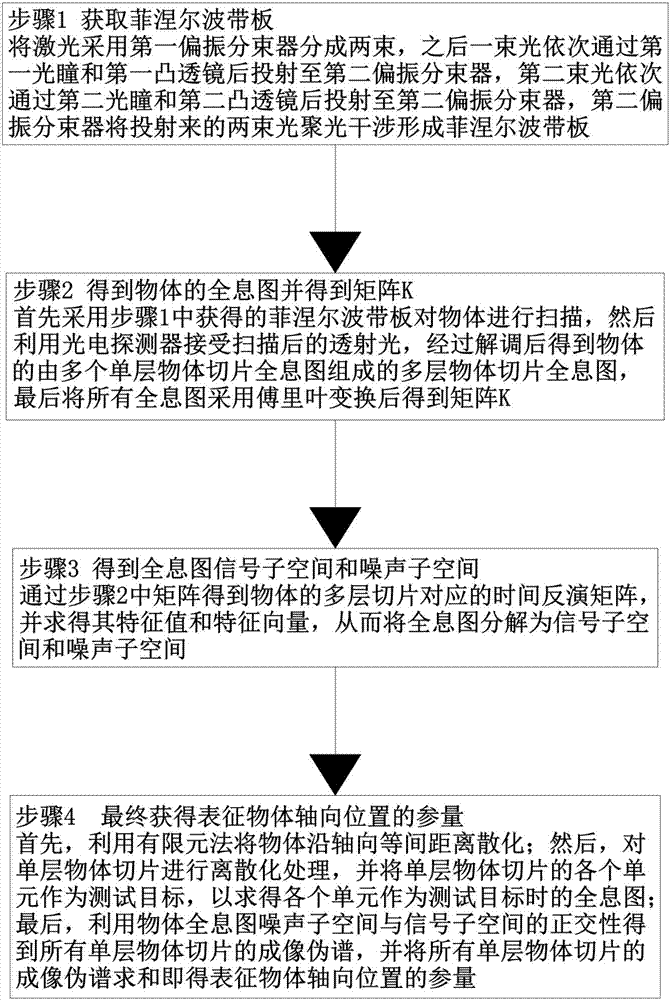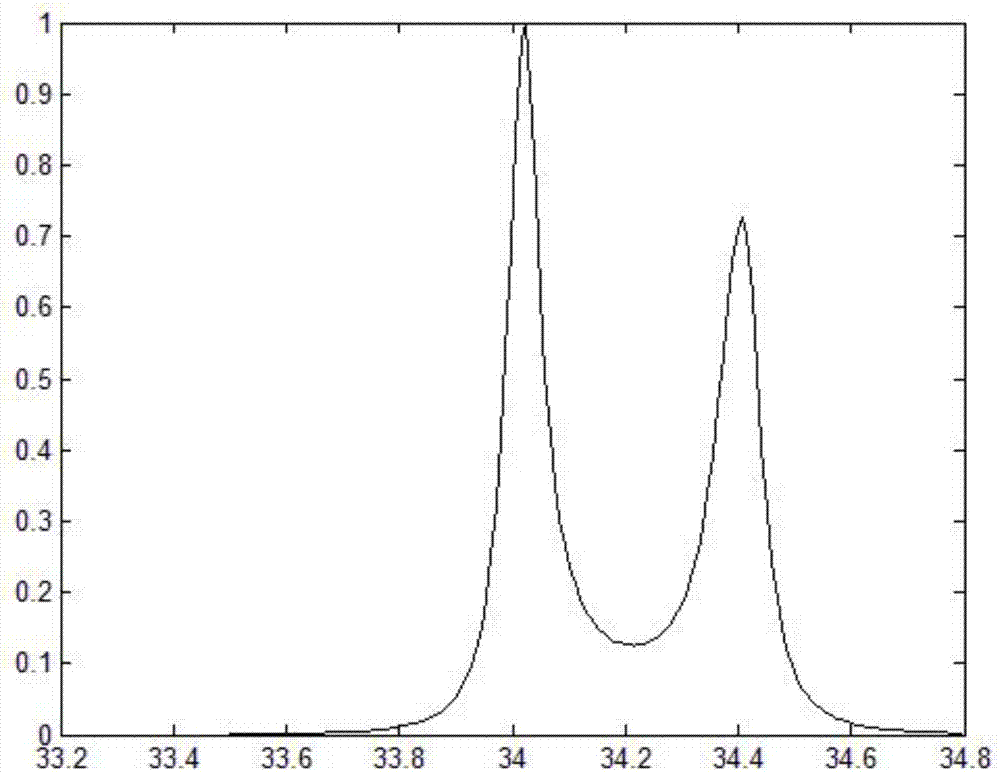TR-MUSIC algorithm-based optical scanning holographic axial positioning method
An optical scanning and axial positioning technology, which is applied in the direction of the instrument, can solve the problem of low resolution of the scanning axial distance
- Summary
- Abstract
- Description
- Claims
- Application Information
AI Technical Summary
Problems solved by technology
Method used
Image
Examples
Embodiment 1
[0089] The present invention uses the TR-MUSIC algorithm to realize the axial super-resolution positioning of the object, which has ultra-high precision and resolution, and is now explained through the following simulation research:
[0090] Simulation 1, z 1 = 34mm, z 2 = 34.4 mm, z 1 and z 2 When a detection target is placed at (10, 5), such as Figure 3a shown.
[0091] Simulation 2, z 1 = 34mm, z 2 = 34.04mm, z 1 and z 2 When a detection target is placed at (10, 5), such as Figure 3b shown.
[0092] Simulation 3, z 1 = 100 μm, z 2 = 100.004 μm, z 1 and z 2 When a detection target is placed at (10, 5), such as Figure 3c shown.
[0093] According to a and b in Figure 3, it can be seen that for an object with an axial distance of 34mm, its resolution can reach 0.4mm, while from Figure 3c It can be seen that the resolution of an object with an axial distance of 100 μm can reach 0.004 μm. Therefore, the method is considered to have high resolution.
[0094]...
Embodiment 2
[0148] The invention uses the TR-MUSIC algorithm to realize the axial super-resolution positioning of the object, is less affected by noise, and has a wide application range. This is illustrated by the following simulation studies:
[0149] Simulation 4, z 1 = 100 μm, z 2 = 100.008 μm, z 1 and z 2 When a detection target is placed at (10, 5) and 60dB Gaussian white noise is added, such as Figure 4 As shown, it can be seen that the present invention is less affected by noise.
[0150] The implementation steps of this simulation study are the same as those of the simulation study in Embodiment 1, and will not be repeated here.
Embodiment 3
[0152] The present invention uses the TR-MUSIC algorithm to realize axial super-resolution positioning of an object, and can effectively perform super-resolution axial positioning on multiple points in a single layer. Specifically, the simulation is described as follows:
[0153] Simulation 5, z 1 = Place 4 points at 100μm, z 2 = When 4 points are placed at 101μm, such as Figure 5a shown.
[0154] Simulation 6, z 1 = Place 4 points at 100μm, z 2 = When placing 3 points at 101μm, such as Figure 5b shown.
[0155] Simulation 7, z 1 = Place 4 points at 100μm, z 2 = When 2 points are placed at 101μm, such as Figure 5c shown.
[0156] According to the above simulation, it can be seen that the present invention is still applicable to multi-point objects, and the resolution can reach 1 μm.
[0157] The implementation steps of this simulation study are the same as those of the simulation study in Embodiment 1, and will not be repeated here.
PUM
 Login to View More
Login to View More Abstract
Description
Claims
Application Information
 Login to View More
Login to View More - R&D
- Intellectual Property
- Life Sciences
- Materials
- Tech Scout
- Unparalleled Data Quality
- Higher Quality Content
- 60% Fewer Hallucinations
Browse by: Latest US Patents, China's latest patents, Technical Efficacy Thesaurus, Application Domain, Technology Topic, Popular Technical Reports.
© 2025 PatSnap. All rights reserved.Legal|Privacy policy|Modern Slavery Act Transparency Statement|Sitemap|About US| Contact US: help@patsnap.com



